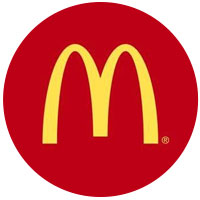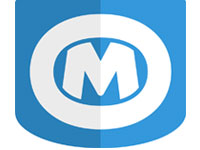
McDonald’s on Wednesday began testing new mobile ordering and payment functionality at 29 of its restaurants in Monterey and Salinas, California.
It will expand the pilot to another 51 restaurants in Spokane, Washington, on March 20.
The company will run multiple pilots to gather customer feedback, work out any issues that arise, and streamline integration with its IT systems before rolling out its updated mobile app to nearly all 14,000 restaurants in the United States — as well as 6,000 others in Canada, the UK, France, Germany, Australia and China — by the end of the year.
Improving the Customer Experience
Providing mobile ordering is part of a global growth plan McDonald’s unveiled on March 1, which hinges on improving the customer experience. The updated app will track a customer’s location, allowing customers to place orders anywhere and ensure their food is fresh when they get it.
“You want to make sure that orders are correct and delivered on time — that stuff that’s supposed to be hot is hot, and stuff that’s supposed to be cold is cold,” Beagle Research Principal Denis Pombriant told CRM Buyer.
The mobile-ordering functionality likely will contribute positively to the customer experience, remarked Holger Mueller, a principal analyst at Constellation Research, because “when you order fast food, you want to order fast, pay fast and eat fast.”
The Trend Toward Mobility
Demand for mobile ordering in the restaurant industry is “experiencing explosive growth,” noted Cindy Zhou, a principal analyst at Constellation Research. For example, Panera Bread, an early adopter of mobile app ordering, has projected its digital sales to hit US$1 billion this year.
Constellation has found that about 30 percent of U.S. adults aged 65 or older have a smartphone, and “they are moving towards mobile device ordering for the convenience and selection,” Zhou told CRM Buyer.
Take Starbucks’ mobile ordering app, for instance. It “worked so well that they had a problem filling orders,” Mueller told CRM Buyer. There were long queues at the pickup counter.
When Being First Isn’t Best
Other restaurant chains, notably Domino’s and Starbucks, took an early lead in providing mobile ordering capabilities to their customers.
McDonald’s may have wanted the early adopters to grapple with the new technology first. CEO Steve Easterbrook reportedly has said that it’s better to be right than to be first to market.
“Starbucks saw a decline in customer satisfaction and their stock dipped about 4 percent last quarter because of issues around long lines and in-store congestion resulting from mobile ordering,” Zhou noted.
“McDonald’s is what we call a ‘fast follower’ at Constellation,” she remarked. “Not being the first to market gives them an opportunity to gauge consumer demand for the service and ensures they avoid some of the mistakes others have made.”
Being first to market can provide a competitive advantage, though, depending on the strategy hammered out by management.
Execution is key. The Panera Bread 2.0 app, which offers rapid pickup and fast lanes, “has led to excellent customer reviews, with over 6,000 4.5-star user ratings on the iTunes App Store,” Zhou pointed out.
“Service is important, but so is engagement,” Pombriant observed. “If you can find a way to engage better with your customers, they’ll overlook small failings.”























































